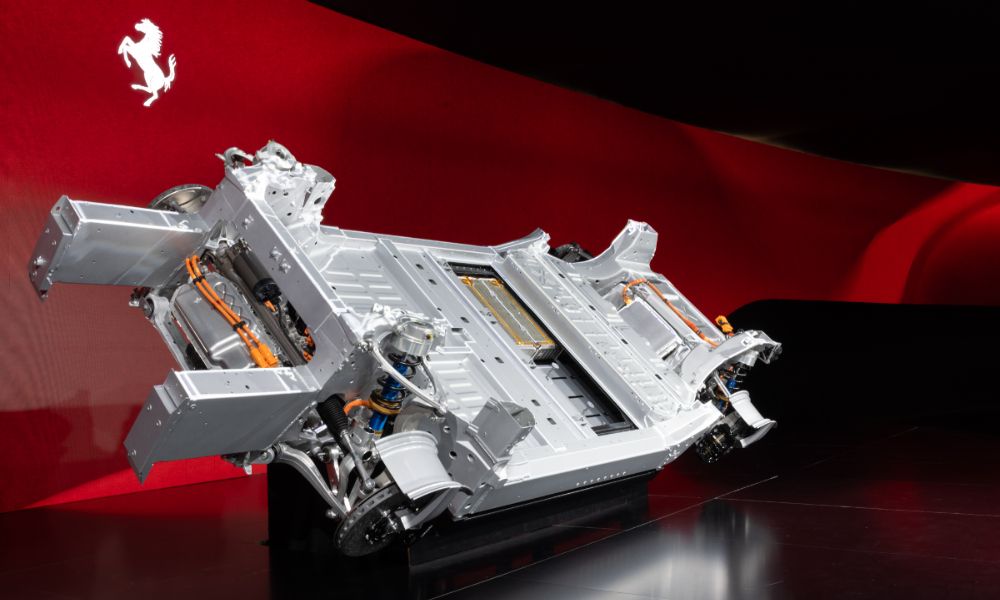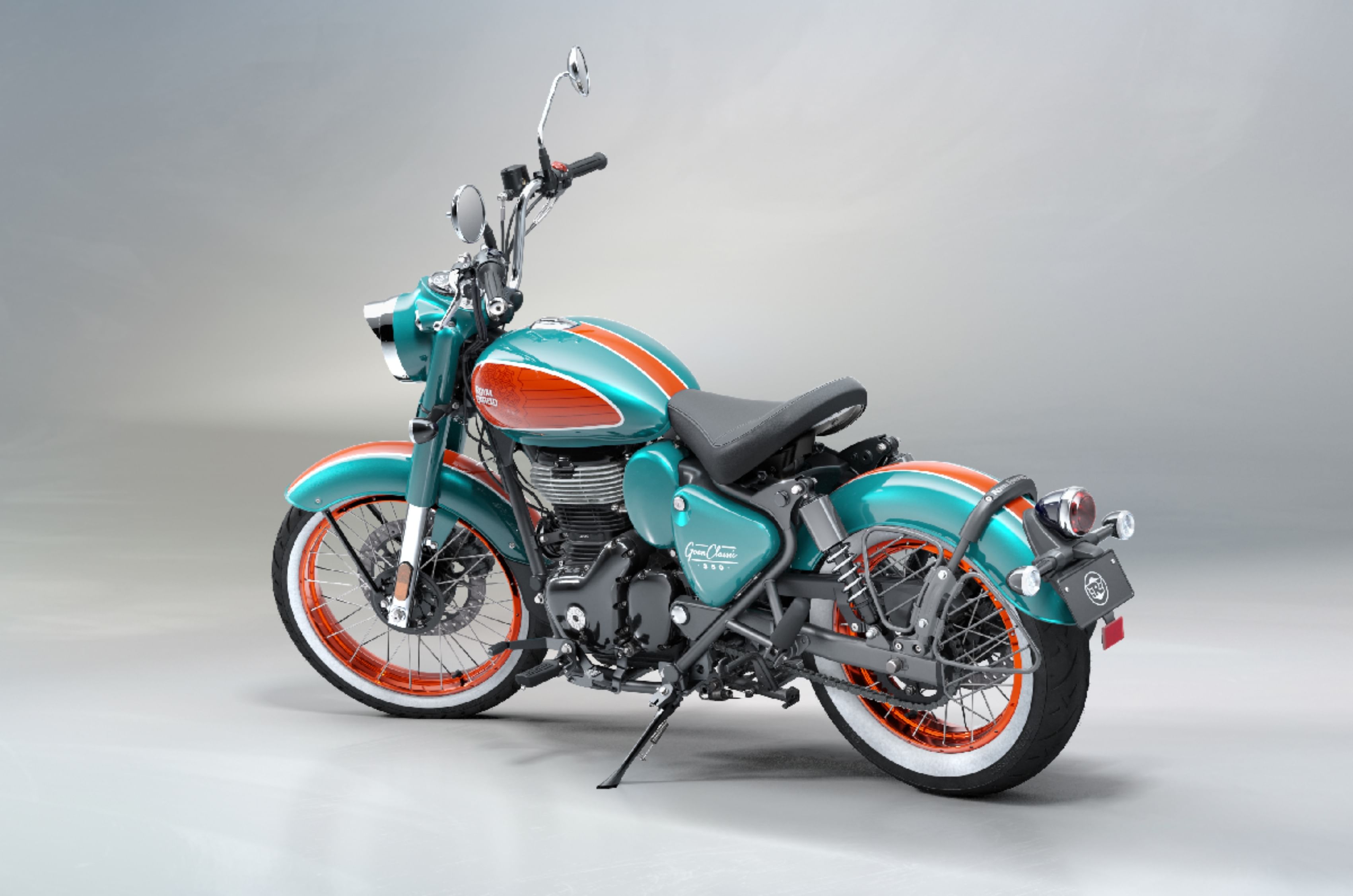Ferrari’s first-ever EV is all set to be unveiled in 2026, and while there is incredible anticipation for the way it would look, the hotter topic is what’s under its skin. We got an India-exclusive peek at what would be the driving force (quite literally) behind the first electric Ferrari. It was probably the first time Benedetto Vigna, CEO, Ferrari, was greeted with cheers and claps for lifting the satin sheet off a chassis and not a production-ready red stunner at Ferrari’s new e-building.
- Ferrari Elettrica (codename) takes just 2.5 seconds to do the 0-100kph sprint
- It borrows active suspension tech from the Ferrari Purosangue
- Ferrari claims its upcoming EV has an over 530km range
To make an EV worthy of the prancing horse, it has to go above and beyond and break conventional EV barriers, and Vigna is proud of the fact that it has, in fact, completely catered to what Ferrari believes are five key pillars. Lateral acceleration, longitudinal acceleration, braking, gearshifts and most interestingly – the sound. This chassis has a lot riding on its shoulders, and a closer look reveals the completely in-house developed components that are key to the success of the Elettrica (known unofficially).
New Ferrari EV powertrain details
One motor on each wheel

The 2026 Ferrari EV is fitted with a quartet of motors, one on each wheel, which make over 1,000hp (combined). The rear pair alone is responsible for 843hp, and under full throttle, the 0-100kph sprint is done in just 2.5 seconds, maxing out at a top speed of 310kph. Ferrari claims the rear motor setup can deliver up to 8,000Nm of torque on the wheels and rev up to 25,500 rpm. Additionally, a high-precision sensor captures vibrations from the powertrain and amplifies them as the car’s sound. The range is over 530km.
E-axles
The Elettrica’s motors work together for torque vectoring and sharper handling. For better efficiency, the front axle can fully disconnect, switching the car to rear-wheel drive. A new disconnect system, 70 percent lighter than before, engages or disengages the front motors in just 500 milliseconds and can switch seamlessly between two- and all-wheel drive depending on conditions.
New Ferrari EV chassis and suspension
Active suspension tech from Purosangue, F80
In terms of construction, the chassis features short overhangs with a large wheelbase to allow for maximum space for the battery pack. The chassis also acts as a frame within which the battery will be placed. The new four-door, four-seater electric vehicle is said to be more of a GT model, and it’ll borrow the active suspension tech used in the Ferrari Purosangue SUV and the F80 hypercar.

Up front, there is an all-new suspension assembly, front electric motors (one power wheel) and an inverter mounted on top. In the centre is where the battery is sandwiched with some space left (air gap) for safety under impact. The battery is also placed as low as possible for a low centre of gravity. At the rear is a first for Ferrari – a rear subframe designed specifically for an extra quiet ride.
New Ferrari EV battery specs
122kWh NMC battery

Gross battery capacity is 122kWh, but what’s quite evident is just how compact the packaging is. Despite this, it isn’t shy of energy density, packing in 195Wh/kg and 1200A. The 800V lithium-ion battery features NMC chemistry, and is IP69 rated as well. What is interesting is the construction that features 15 modules housing 14 cells each. 13 of the 15 modules occupy the floorpan, while the remaining two are mounted on top and behind what would be the rear seats. These also feature fuses and other ancillary components like the battery management ECU. Safety of the battery was a key focus point too.
With inputs from Uday Singh
Also see:
Ferrari opens new test track ahead of first ever EV launch
Iconic Ferrari Testarossa nameplate revived for SF90 successor













.jpg?w=700&c=0)
































